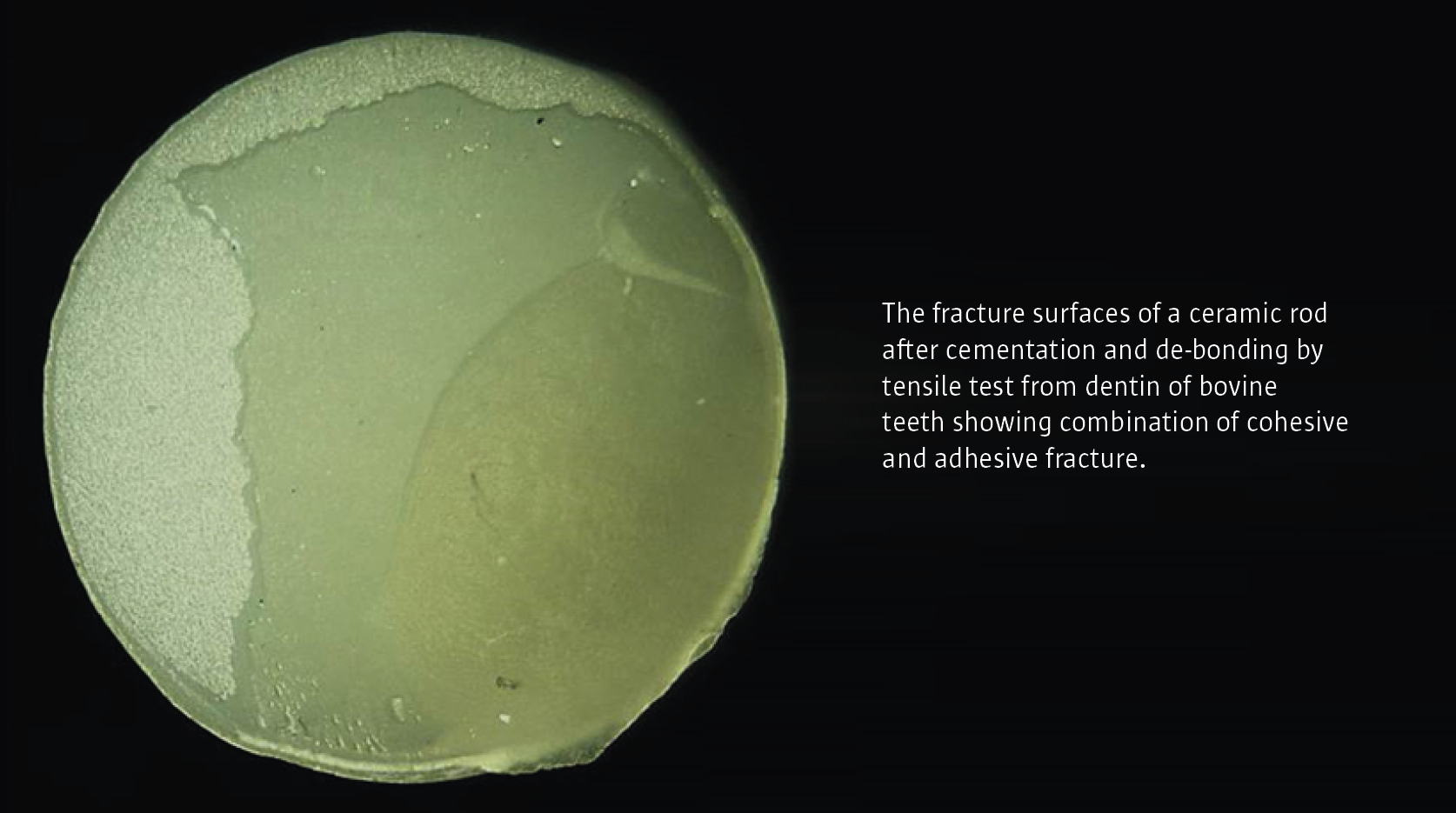Reason for loosening
of ceramic restorations

The weakest link in cementation of glass ceramic and zirconia restorations to dentin was the resin cement.
The roughness seemed less important than the inherent strength of the cement in the bond between ceramics and bovine dentin.
The resin cement forms the weakest link for a ceramic restoration. This was found in an investigation of the de-bonding of resin cementation of zirconia or lithium di-silicate ceramic to bovine dentin. Bonding to the ceramic or to the dentin rarely failed. The experiments mimicked a clinical situation by aging the bonded materials before mechanical testing.
Rods of zirconia were either: 1) sandblasted or 2) melt-etched with potassium hydrogen-difluoride (KHF2). Rods of glass ceramic reinforced with lithium di-silicate were etched with hydrogen fluoride (HF). Ten rods from each treatment were cemented to bovine dentin with each of five dual-cure resin cement products, i.e. 50 samples for each treatment group. All samples were thermo-cycled before the force required to break the bonding was measured. The morphology of the de-bonded surfaces was examined in a stereo microscope and the de-bonding characterized as cohesive or adhesive or as a combination.
Cohesive de-bonding, that is fracture through the resin cement, occurred most frequently; combined adhesive-cohesive de-bonding was second most prevalent. No adhesive fractures were observed at the interface between resin cement and melt-etched zirconia surfaces. The surface treatments resulted significant differences in the roughness (Sa-values) of the ceramics measured with confocal microscope prior to bonding. However, the roughness seemed less important than the inherent strength of the cement in the bond between ceramics and bovine dentin.
Read more:
Sagen MA, Kvam K, Ruyter EI, Rønold HJ.
Debonding mechanism of zirconia and lithium disilicate resin cemented to dentin.
Acta Biomater Odont Scand 2019 (https://www.tandfonline.com/loi/iabo20)
Acta Biomaterialia Odontologica Scandinavica, Volume 5, 2019.

